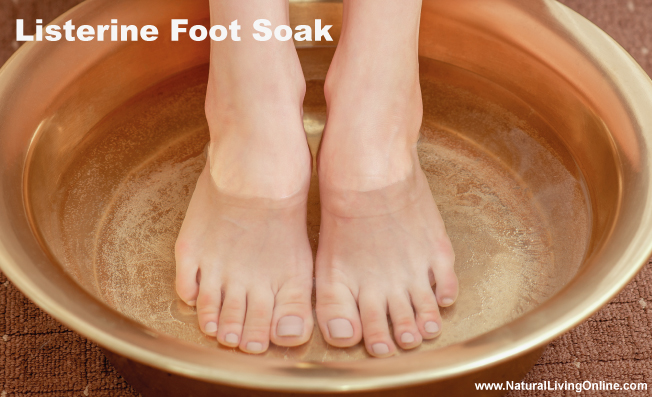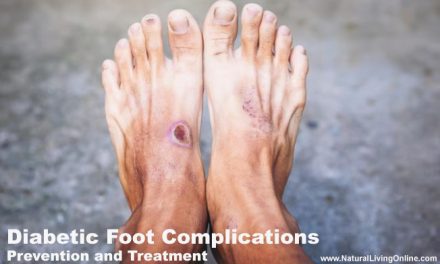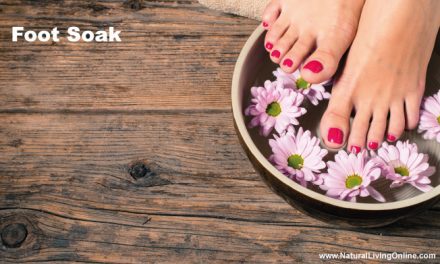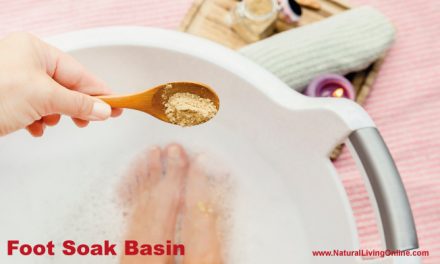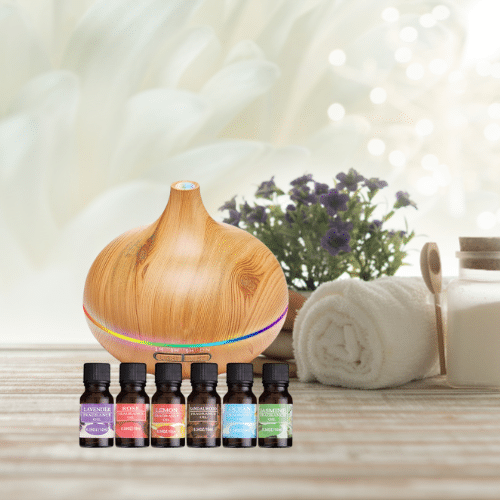Foot care is an essential part of our overall health, yet it is often neglected. Our feet are the foundation of our body, and they are responsible for carrying us around throughout the day. This is why it is important to take care of our feet, and one way to do that is through Listerine foot soak.
Listerine foot soak is a popular home remedy for various foot problems. It is an easy and inexpensive way to pamper your feet, and it has numerous benefits. In this article, we will discuss everything you need to know about Listerine foot soak, including its history, benefits, usage instructions, and DIY recipes.
What is Listerine Foot Soak?
Listerine foot soak is a foot bath solution made of Listerine mouthwash and water. Listerine is a brand of antiseptic mouthwash that was first introduced in the late 1800s as a surgical antiseptic. It contains various essential oils, including thymol, eucalyptol, menthol, and methyl salicylate.
The use of Listerine as a foot soak became popular in recent years as people discovered its many benefits for the feet. It is believed that the essential oils in Listerine have antifungal, antibacterial, and antiviral properties, which make it effective in treating various foot problems.
How does Listerine Foot Soak work?
Listerine foot soak works by softening the skin and killing the bacteria and fungi that cause foot problems. The essential oils in Listerine have antifungal, antibacterial, and antiviral properties that help to eliminate foot odor, treat toenail fungus, and relieve dry and cracked heel.
Listerine Foot Soak Ingredients
Listerine foot soak is made of Listerine mouthwash and water. The exact amount of Listerine and water you use may vary depending on the recipe you are using. The ingredients in Listerine include:
- Thymol: an antifungal and antibacterial agent
- Eucalyptol: an antiseptic and anti-inflammatory agent
- Menthol: a cooling agent that provides relief for sore feet
- Methyl salicylate: a pain reliever and anti-inflammatory agent
How to Prepare and Use Listerine Foot Soak?
Preparing Listerine foot soak is easy and straightforward. Here are the steps to follow:
Step 1: Fill a small tub with lukewarm water
Step 2: Add Listerine mouthwash to the lukewarm water
Step 3: Soak your feet in the solution for 15-20 minutes
Step 4: Dry your feet with a towel and apply moisturizer
Safety Precautions
While Listerine foot soak is generally safe, there are a few precautions you should take to avoid any adverse effects. Here are some safety precautions to keep in mind:
- Do not use Listerine foot soak if you are allergic to any of its ingredients
- Do not use Listerine foot soak if you have any open sores or wounds or cuts on your feet
- Do not use Listerine foot soak if you have diabetes or any other medical condition that affects your feet without consulting your doctor first
- Do not use Listerine foot soak on children without consulting a pediatrician first
- Do not use Listerine foot soak if you are pregnant or breastfeeding without consulting your doctor first
Benefits of Listerine Foot Soak
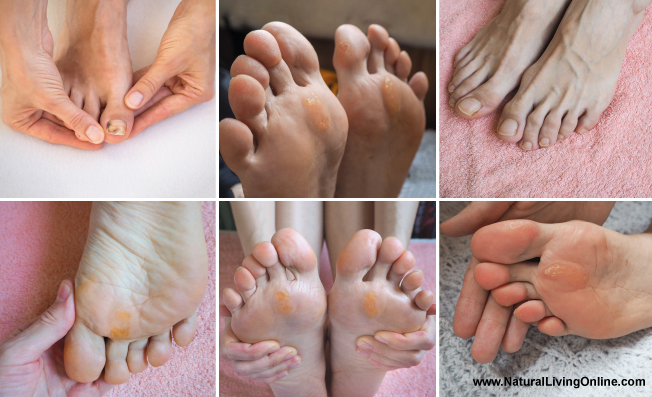
Listerine foot soak has numerous benefits for the feet. Here are some of the benefits of using Listerine foot soak:
Eliminates foot odor
Foot odor is a common problem that can be embarrassing and uncomfortable. Listerine foot soak can help to eliminate foot odor by killing the bacteria that cause it. The essential oils in Listerine have antibacterial properties that help to eliminate the odor-causing bacteria, leaving your feet smelling fresh and clean.
Treats toenail fungus
Toenail fungus is a common fungal infection that affects many people. It can cause your toenails to become discolored, thickened, and brittle. Soaking your feet in Listerine can help to treat toenail fungus by killing the fungus that causes it. The antifungal properties of thymol and eucalyptol in Listerine help to kill the foot and nail fungus and prevent it from spreading.
Softens hard calluses
Calluses are thick, hard patches of skin that develop on the feet as a result of repeated pressure or friction. They can be uncomfortable and unsightly. Listerine foot soak can help to soften hard calluses and make them easier to remove. The essential oils in Listerine help to moisturize and soften the skin, making it easier to remove the calluses.
Relieves dry and cracked feet
Dry, cracked feet can be painful and uncomfortable. Listerine foot soak can help to relieve dry and cracked feet by moisturizing and softening the skin. The essential oils in Listerine help to hydrate the skin and prevent it from drying out, leaving your feet feeling soft and smooth.
Soothes foot pain and inflammation
Foot pain and inflammation can be caused by a variety of factors, including plantar fasciitis, arthritis, and injury. Listerine foot soak can help to soothe foot pain and inflammation by reducing swelling and inflammation. The menthol in Listerine has a cooling effect that can help to relieve pain and discomfort.
DIY Listerine Foot Soak Recipes
Here are some DIY Listerine foot soaks home remedies that you can try:
Basic Listerine Foot Soak Recipe
Listerine is a popular and affordable option for a sensitive skin foot bath. Add one cup of any color of Listerine to warm water in a basin and soak your feet for 15-20 minutes. The antiseptic properties of Listerine can help kill bacteria that cause foot odor, while the warm water can soothe and soften dry skin.
For a more potent soak, combine 1/2 cup of Listerine, 1/2 cup of white vinegar, and 1 cup of Epsom salt in a basin of warm water. Soak your feet for 20-30 minutes, and then dry them off. Use pumice stone to scrub off the dead skin. This combination of ingredients can help exfoliate rough skin, kill bacteria and fungus, and reduce foot odor.
To brighten and exfoliate your skin, mix one cup of Listerine with the juice of one lemon in a basin of warm water. Soak your feet for 15-20 minutes, and then dry them off. The lemon’s acidic properties can help remove dead skin cells, while the antiseptic properties of Listerine can help reduce foot odor and other fungal infections. It is also very effective for athlete’s foot.
For a natural, antibacterial foot soak, add ten drops of tea tree oil to one cup of Listerine in a basin of warm water. Soak your feet for 15-20 minutes and then dry them off. Tea tree oil has antifungal and antibacterial properties that can help treat bacterial infections and foot fungus while Listerine can help soften and soothe the skin.
Vinegar foot soak – If you suffer from dry skin, mix one cup of Listerine, one cup of white vinegar, and two cups of warm water in a basin. Soak your feet for 30-45 minutes and then dry them off. This combination can help exfoliate and moisturize dry skin while reducing foot odor.
To soothe and relax your feet, add one cup of Epsom salt and one cup of Listerine (any color) to warm water in a basin. Soak your feet for 15-20 minutes and then dry them off. Epsom salt can help relieve muscle soreness and promote relaxation, while Listerine can help reduce foot odor.
For a refreshing foot soak, add one cup of Listerine (any color), 1/4 cup of baking soda, and one cup of warm water in a basin. Soak your feet for 15-20 minutes and then dry them off. Baking soda can help remove dead skin cells, while Listerine can help reduce foot odor.
If you want to stimulate blood circulation, add one cup of Listerine (any color) and one tablespoon of ginger powder to warm water in a basin. Soak your feet for 15-20 minutes and then dry them off. Ginger can help increase blood flow, while Listerine can help reduce foot odor.
To soothe tired feet, add one cup of Listerine (any color) and one cup of chamomile tea, and 10 drops of lavender oil to warm water in a basin. Soak your feet for 15-20 minutes and then dry them off. Chamomile tea can help reduce inflammation and promote relaxation, while Listerine can help reduce foot odor.
For a luxurious foot soak, mix one cup of Listerine (any color), one cup of coconut oil, and one tablespoon of honey in a basin of warm water. Soak your feet for 15-20 minutes and then dry them off. Coconut oil and honey can help moisturize and soothe dry, cracked skin, while Listerine can help reduce foot odor.
Essential Oils Benefits in Listerine foot soak
While Listerine mouthwash is a popular ingredient in foot soak recipes, you can also use essential oils to enhance the therapeutic benefits of the soak. Here are some of the different essential oils that can be used in Listerine foot soaks and their benefits for your feet:
Tea Tree Oil
Tea tree oil has antifungal, antibacterial, and antiseptic properties, making it an effective natural remedy for foot infections, such as toenail fungus, athlete’s foot, and foot odor. Tea tree oil foot soak can help to eliminate odor-causing bacteria, soothe itchy and inflamed skin, and promote healing.
Peppermint Oil
Peppermint oil has a cooling effect that can help to soothe tired and achy feet, reduce inflammation, and improve circulation. Peppermint oil can also help to prevent foot odor by eliminating bacteria and fungus.
Eucalyptus Oil
Eucalyptus oil has antifungal and antibacterial properties, making it a useful natural remedy for foot infections. Eucalyptus oil can help to kill fungus and bacteria, reduce inflammation, and soothe sore and tired feet.
Lavender Oil
Lavender oil has a calming and relaxing effect that can help to reduce stress and promote restful sleep. Lavender oil can also help to soothe tired and sore feet, reduce inflammation, and promote healing.
Lemon Oil
Lemon oil has a refreshing and invigorating scent that can help to improve mood and boost energy levels. Lemon oil can also help to eliminate foot odor by killing bacteria, soothe tired and aching feet, and improve circulation.
Rosemary Oil
Rosemary oil has antifungal, antibacterial, and anti-inflammatory properties, making it a useful natural remedy for foot infections and inflammation. Rosemary oil can help to kill fungus and bacteria, reduce inflammation, and soothe sore and tired feet.
When using essential oils in Listerine foot soaks, it is important to dilute them properly and follow the recommended dosage to avoid skin irritation or other adverse effects. You can add a few drops of essential oil to your Listerine foot soak recipe or mix them with a carrier oil, such as coconut oil or olive oil, before applying them to your feet.
Tips for Maintaining Healthy Feet
In addition to using Listerine foot soak, here are some tips for maintaining healthy feet:
Practice good hygiene
Wash your feet regularly with soap and water and dry them thoroughly to prevent bacteria and fungus from growing.
Wear comfortable shoes
Wear shoes that fit properly and provide adequate support to prevent foot pain and injuries.
Moisturize your feet regularly
Use a moisturizer to keep your feet soft and prevent dryness and cracking.
Keep your feet dry
Wear socks that wick away moisture and avoid wearing wet shoes or socks for long periods.
Schedule regular foot check-ups with a podiatrist
See a podiatrist regularly to check for any foot problems and receive treatment if necessary. Regular foot check-ups can help prevent or detect any foot conditions early on.
Conclusion
Listerine foot soak is a simple and effective way to improve the health and appearance of your feet. It can help to eliminate foot odor, treat toenail fungus, soften calluses, relieve dry and cracked feet, and soothe foot pain and inflammation. By using Listerine foot soak regularly and practicing good foot hygiene, you can maintain healthy, happy feet.
Try out one of the DIY Listerine foot soak recipes and see the difference it can make for your feet. And remember, taking care of your feet is important for your overall health and well-being. So don’t neglect your feet, they work hard for you every day!
This website does not provide medical advice.
All information provided on this website, and on associated social media networks, including but not limited to texts, images, and numbers are for general information purpose only. It is not intended as medical advice and it does not include all possible precautions, side effects, or interactions that may occur. Neither NaturalLivingOnline.com nor its author/founder take responsibility for how you use this information. Statements contained on NaturalLivingOnline.com have not been evaluated by the FDA. You should conduct thorough research via multiple sources and consult your physician or qualified doctor before using any essential oil or herbal remedy. Information on NaturalLivingOnline.com must not be relied upon for medical, legal, financial or other decisions.

